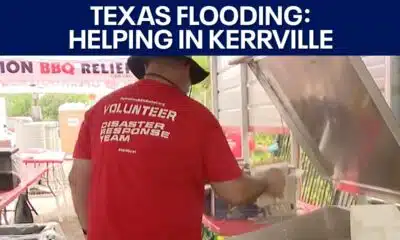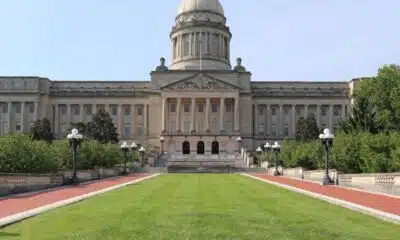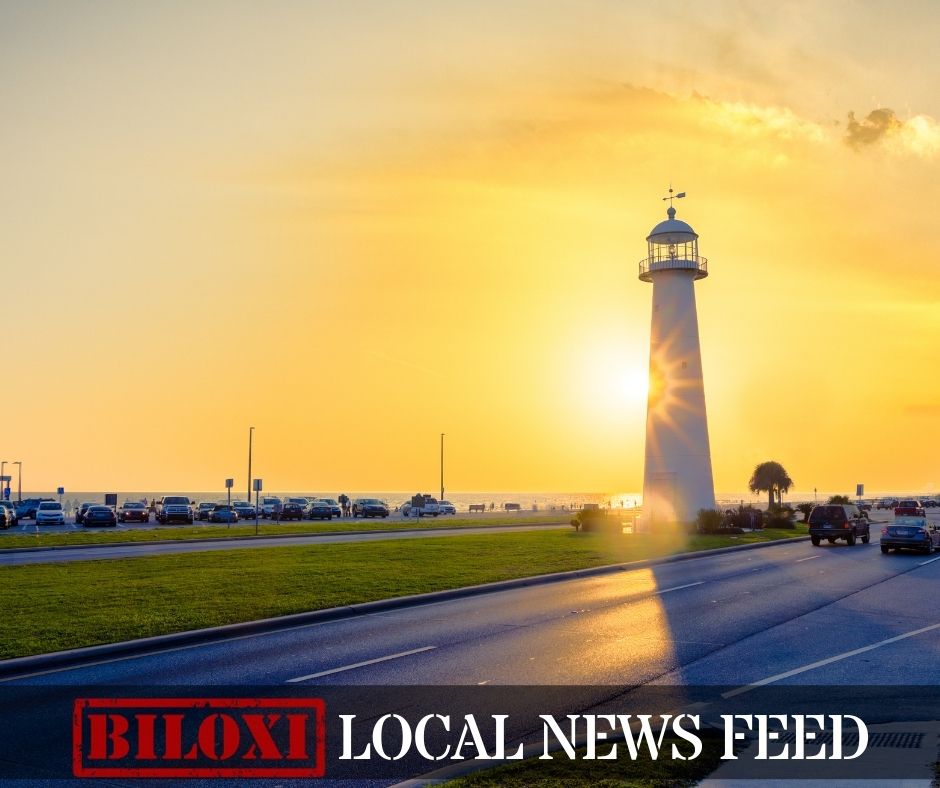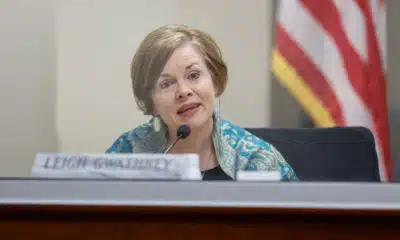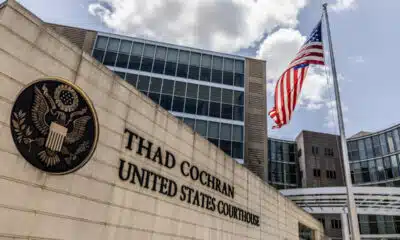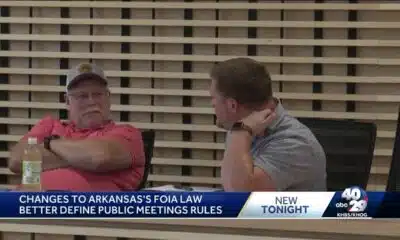News from the South - Missouri News Feed
Missouri clinics will ‘immediately’ offer abortion across the state after judge’s ruling
by Jason Hancock, Missouri Independent
February 14, 2025
A Missouri judge on Friday blocked a licensing requirement for abortion clinics that providers argued was a key obstacle to renewing access to the procedure across the state.
Hours later, Planned Parenthood clinics announced they would begin offering abortion services in Missouri.
“Abortion care will be restored immediately,” said Emily Wales, President and CEO of Comprehensive Health of Planned Parenthood Great Plains. “The people voted, the court responded and we will do our part: serving Missourians in their home state.”
In a three-page ruling issued late Friday afternoon, Jackson County Circuit Court Judge Jerri Zhang said the regulations mandate physicians to perform certain exams and testing that are “unnecessary.”
The licensing requirement is “discriminatory,” Zhang wrote, “ because it does not treat services provided in abortion facilities the same as other types of similarly situated health care, including miscarriage care.”
Planned Parenthood clinics had previously said it could begin taking walk-in medication abortion appointments in Kansas City, Columbia and St. Louis if the judge ruled in their favor.
“Our health center staff are quickly readying to restart this critical care in the coming days,” said Margot Riphagen, president and CEO of Planned Parenthood Great Rivers.
Abortion Action Missouri announced Friday evening the expansion of its clinic escorts program to include the Planned Parenthood in St. Louis.
“Barely a year after launching the campaign to end Missouri’s abortion ban, the court upheld the will of the people,” Mallory Schwarz, executive director of Abortion Action Missouri, said.
“With this change the landscape for Missourians and the entire Midwest region will be transformed,” she said, “as patients will have greater access to abortion care than they have had in years.”
Coalition Life also announced it would again gather outside the clinic in St. Louis and re-establish its sidewalk counseling efforts.
“This ruling reinforces the need for pro-life agencies and advocates to offer life-affirming alternatives to women,” said Brian Westbrook, the group’s executive director. “Coalition Life remains steadfast in our mission to provide resources, education, and support to women facing unexpected pregnancies.”
Stephanie Bell, a spokeswoman with Missouri Stands with Women — one of several political action committees formed last year to defend the state’s abortion ban — said the fight is not over.
“We will not stop fighting to protect both women and unborn children from reckless, profit-driven practices,” Bell said. “No woman should suffer, and no innocent life should be taken, in the name of an industry that refuses to be held accountable.”
The day after voters narrowly decided to overturn the state’s near-total abortion ban and protect the right to an abortion in the state constitution, the ACLU of Missouri, Planned Parenthood Great Plains and Planned Parenthood Great Rivers sued the state to strike down those statutes.
Zhang previously blocked a number of “targeted regulation of abortion provider” statutes, better known as TRAP laws, such as a 72-hour waiting period for an abortion and a requirement that physicians performing the procedure have admitting privileges at nearby hospitals were put on hold.
But the licensing requirements have left clinics unable to offer abortion in Missouri.
Friday’s ruling will certainly be appealed by the state. A spokeswoman for Missouri Attorney General Andrew Bailey did not respond to a request for comment.
A decade ago, more than 5,000 abortions were performed in Missouri, according to the Missouri Department of Health and Senior Services. By 2020, when abortions were still legal, that number fell to 167, a drop that abortion providers attributed to the state’s growing list of regulations.
Missouri’s trigger law banning all abortions with limited exceptions for medical emergencies went into effect the same day the U.S. Supreme Court overturned Roe v. Wade in June 2022.
Last November, Missourians narrowly approved Amendment 3, which states, in part, that “the right to reproductive freedom shall not be denied, interfered with, delayed, or otherwise restricted unless the government demonstrates that such action is justifiable by a compelling governmental interest achieved by the least restrictive means.”
The lawsuit seeking to strike down Missouri’s remaining abortion restrictions was filed soon after.
Efforts by the Republican legislative majority to repeal or modify the terms of the Amendment 3 have led to 17 bills and proposed constitutional amendments filed in the Missouri House, and another 19 in the state Senate.
Organizers with “What’s Next,” a group of Missouri activists who have pressed for a constitutional amendment beyond what voters approved last year with no restrictions on abortion, said attempts to unravel Amendment 3 should make abortion rights advocates think twice before celebrating Friday’s ruling.
“Today’s temporary court ruling on abortion is progress, but a far cry from any sort of win,” the organization said in a statement to the media. “What remains in our state is a constitutional right for government interference, and we expect no less from our hostile legislature.”
The only House measure to receive a hearing so far is a proposed constitutional amendment that would ban abortions except in cases of medical emergency, rape or incest. Filed by state Rep. Melanie Stinnett, a Republican from Springfield, it would only allow abortions for rape or incest in the first 12 weeks of pregnancy and only if a report has been filed with law enforcement.
None of the Senate proposals have been scheduled for a hearing.
The Independent’s Rudi Keller and Anna Spoerre contributed to this story.
Updated at 8:25 p.m. with comments from Abortion Action Missouri, Coalition Life, Missouri Stands With Women and What’s Next.
Missouri Independent is part of States Newsroom, a nonprofit news network supported by grants and a coalition of donors as a 501c(3) public charity. Missouri Independent maintains editorial independence. Contact Editor Jason Hancock for questions: info@missouriindependent.com.
News from the South - Missouri News Feed
Chuck E. Cheese opens arcades ‘created for adults’ in Missouri, 7 other states
SUMMARY: Chuck’s Arcade, a new arcade chain from Chuck E. Cheese’s creators, targets older gamers and lifelong fans seeking classic games like “Ms. Pac Man” and “Mortal Kombat” in mall locations. Designed primarily for adults but welcoming all ages, these arcades mix vintage games such as “Donkey Kong” with modern racing simulators and VR experiences. Some locations, like Kansas City, offer pizza, while others do not. Animatronic characters from Chuck E. Cheese’s past appear as nostalgic decorations rather than performers. Chuck’s Arcade has opened in multiple U.S. cities, with more locations planned, including one soon in Brea, California.
The post Chuck E. Cheese opens arcades 'created for adults' in Missouri, 7 other states appeared first on fox2now.com
News from the South - Missouri News Feed
Weird news with Tim and Brittany!
SUMMARY: A new TikTok trend suggests popping popcorn, then freezing it to make it crunchier, though it’s unclear if freezing actually improves the texture or taste. Meanwhile, Costco faces copyright claims for selling clothes resembling a popular athletic lifestyle brand’s pants and hoodies, sparking debate about authenticity and brand imitation. The hosts discuss nostalgic back-to-school NBA shoes, highlighting how brands evolve or get copied. One shared a personal story about nearly buying a $3,500 couch until a motherly intervention led to finding a similar $950 clearance bargain. Lastly, Amazon Prime Day sales are upcoming, promising more deals and surprises.
ST. LOUIS – Tim and Brittany share weird news of the week: Generation Yap!
News from the South - Missouri News Feed
Joe's Blog: Rain chances percolate for some (MON-7/7)
SUMMARY: Over the holiday weekend, devastating flash floods struck Texas, leaving over 50 dead and many missing, particularly near the Guadalupe River. The floods were fueled by tropical moisture from Tropical Storm Barry and were worsened by the region’s geography and drought-hardened soils. Despite timely National Weather Service warnings, communication challenges and false alarm fatigue complicated the response. Similar heavy rains impacted parts of the Carolinas as well. Locally, rain has been sparse, with isolated storms possible through the week but with uncertain coverage. Experts emphasize improving weather education, warning systems, infrastructure, and communication to prevent future tragedies and better protect vulnerable communities.
The post Joe's Blog: Rain chances percolate for some (MON-7/7) appeared first on fox4kc.com
-
News from the South - Louisiana News Feed6 days ago
Attorneys who run public defender offices replaced amid contract turmoil
-
News from the South - Alabama News Feed6 days ago
Gov. Kay Ivey expected to name Alabama parole board pick in coming days
-
Local News7 days ago
Mississippi’s new seafood labeling law takes effect July 1
-
News from the South - Florida News Feed7 days ago
US Senate after overnight debate unable to gain enough votes yet to pass GOP megabill
-
News from the South - Georgia News Feed6 days ago
Officials report average eagle nesting season in coastal Georgia, nearly 200 eaglets fledged statewide
-
News from the South - Kentucky News Feed6 days ago
In small-town Kentucky, finding ‘all the more reason to resist’
-
Mississippi Today6 days ago
Trump nominates Baxter Kruger, Scott Leary for Mississippi U.S. attorney posts
-
News from the South - Arkansas News Feed6 days ago
Centerton prepares for new FOIA law taking effect in August







